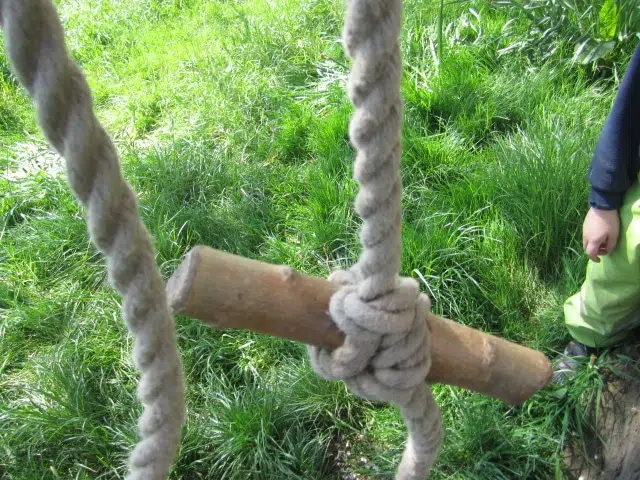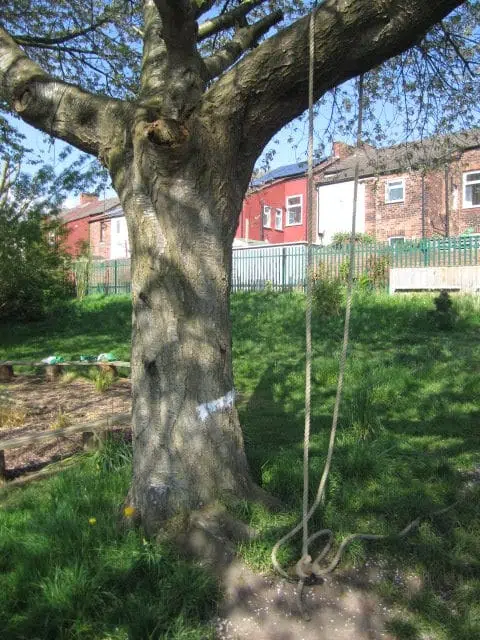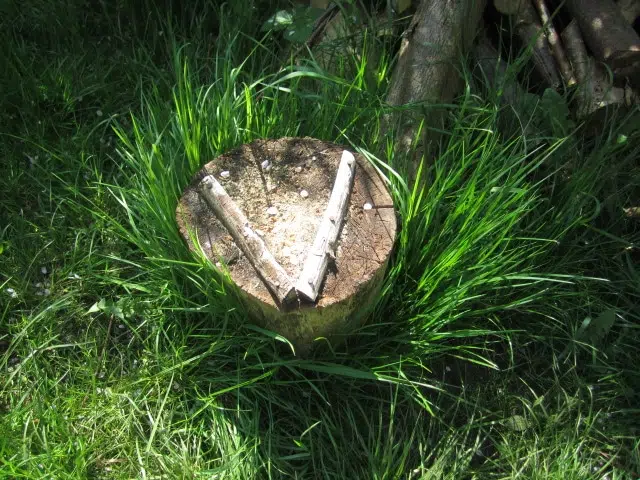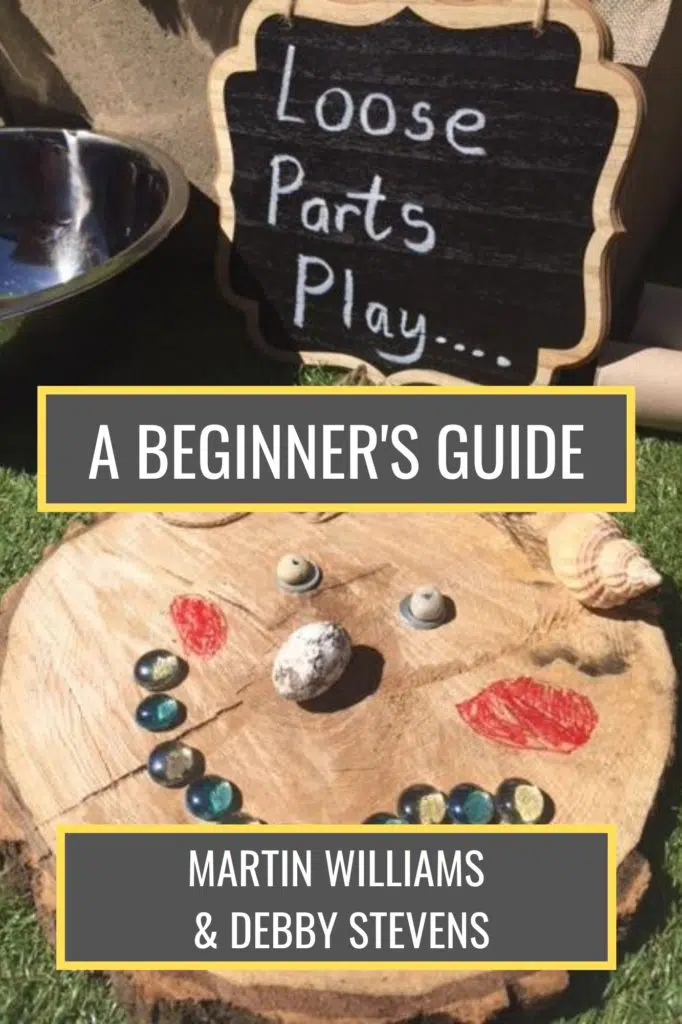Risky play is all the rage at the moment on social media, which is great because it has tremendous value for children. There is also quite a bit of fear about it, mostly because people don’t know what it actually looks like, and what it entails.
So what exactly are risky play activities for children? Some key risky play activities include:
- Climbing up high objects
- Experiencing speed such as on a log swing
- Using dangerous tools such as saws
- Being near risky elements such as fire or water
- Rough and tumble play with others
- Disappearing games, such as hide-and-seek
As you can see, risky play is normally categorized into six types of play. Most practitioners seem to look at it in this way.
In this post, I’m going to look through the six types of risky play, and give lots of concrete examples of what these types of play look like in reality.
Risky play is a wonderfully economical and budget-friendly form of play, as well as having huge other benefits. (If you’re interested particularly in ideas on a budget, then you can download my free ebook ’50 Outdoor Number Activities on a Budget’ here. )

1. Climbing
Children love to climb things! They like the thrill of danger in the possibility of falling. They also like to view the world in a different way when they get to the top of something. Good examples of things to climb are:
Trees
Trees are the classic object to climb up. Of course, some are easier than others. Some trees just go straight up, which makes them very tricky to climb. The perfect trees for climbing are the ones that have lots of very low branches that stick out almost horizontally.
I have known a couple of settings that have painted lines on the climbing trees, just so the children know not to go too high past this point. There are different ways of managing risk in risky play, and this is just one example. There is no definite right or wrong.
Buildings
Taking trips up tall buildings with big staircases, or looking out of balconies is linked to this kind of height risk.
Logs
These are great places to introduce climbing before they have a go of tackling trees. A few fallen logs are an excellent feature to try climbing over. They develop so much coordination and balancing skills.
Stacking Crates/Planks
There are all sorts of ways for children to create their own climbing experiences. Some crates or reels, and things like planks are great for them to create walkways. If you’d like to find out lots more outdoor ideas such as these then check out my essential guide to outside loose parts play.
These projects are excellent for problem-solving and communication. They also get children excited about a group activity, and helping each try it out.
Always just keep an eye out for any of these activities that they are trying.
Climbing Frames
These tap into this instinct for climbing and height also. Wooden walkways or metal frames are a great draw for children. They learn so much from them, and they are a fantastic thing to develop some of the basic skills of climbing that you can build on when attempting trickier objects later.
Some climbing frames have an element of challenge for even quite old children. Often schools try to get climbing frames that are in different sections or differentiated areas of challenge. They are a big investment, so you don’t want the children to get bored, or for them to be too easy.
Up Hills
Children love the feeling of exploring, and this can be mixed in with this risky desire for height.
Hills or slopes are a great element to climb, particularly if there is the risk of tumbling down, or if you don’t quite know what is going to be at the top.
2. Experiencing Speed
This is the element that probably carries on throughout many people’s lives – the need for speed!
There are many ways children can experience this. Some ways are very possible in an educational environment, and some are less so.
Rope Swing
A very cheap and simple resource that will provide huge amounts of learning is the humble rope swing.
All you need is a rope and some kind of tree or similar to hang it off.
Rope swings provide that raw speed, and also height mixed together.
Some rope swings that you see in forest schools are the ones where the rope is not attached to the tree. Simply throw a rope over a branch, and then a team of children attempt to lift up one of their friends who is hanging onto the other end of the rope.
Brilliant for teamwork and physical development.

Sleds
The ultimate snow activity! Get those sleds out and experience some raw speed, with that thrill of not knowing where you will end up, and if you’re about to go tumbling out of the sled and down the hill.
Boats
The ultimate for speed is something like a dinghy on rapids or a speed boat!
All boats, however, have an element of risk. You are just a few feet away from a murky void – a huge body of cold, dangerous water.
Skis
A hard one to replicate in school or nursery, but skiing provides a fantastic element of speed risk.
Playground Swing
These are a great introduction to this risky speed instinct. Even very young children can access playground swings in their different forms. They start to address this instinct for risky speed, and being slightly out of control.
Slides
There are many different types of slides around.
The classic metal or plastic slide is a fantastic and well-known tool for providing speed in a fun way. Children are not quite in control as they race down them, and don’t know how they will land, or how far they will shoot off the end. They can also go down in lots of different ways, which is good for their creativity and decision-making.
There are also lots of natural sliding activities you can try out.
Many forest schools have a mudslide. This is usually a small natural hill or slope, where children simply slide down in the mud!
A wonderfully messy and joyful activity! Make sure you get them to wear full waterproof clothing.
Children love the fear, the danger, and the sense of placing trust in an activity.
Bikes
Bikes are another one that in their various forms provide this element of speed for risky play. There is the danger of falling off or crashing.
Bikes are excellent for developing strength in the legs, and also coordination for going around obstacles.
3. Dangerous Tools
This is often the element of risky play that gets the adults’ heart rates beating the fastest! Understandably so, considering the litigious times we live in.
The key thing to think about when children engage with dangerous tools is risk assessment. You want to have a very high ratio of adults to children, probably 1:1 when you start. This is often the main barrier to using them, as 1:1 ratios are a big stretch on resources. However, this is sad, as children get so much out of using them.
Also, talk through simple rules, and just make sure they are focused when using them and not distracted.
Anyway, here are some examples of risky tools you can use:
Knives
You can use these to scrape the bark of small twigs or branches.
Saws
The hack-saw types of saws are probably the best bet. You can use a vice to clamp pieces of wood like small logs for them to cut. Children often use two hands on the saw, or if they use one, just keep the other hand well out of the way.

Drills
These have only a slight element of danger compared to knives and saws.
Simple hand drills work best for this. These are other tools that require two hands, one for turning, and one for holding in place.
I went to a forest school where the children had made their own natural mobiles. They had used drills to drill holes into small slices of wood, and then threaded string through the holes.
Other activities include things like boring holes into logs.
Hammers
Very young children can have a go at child-friendly mallets. They are brilliant for fine motor games, and hitting pegs and golf tees into things like boards or pumpkins.
The next step is to use larger hammers or mallets.
You can try hitting nails into wood, or again hitting things like pegs, golf tees, or small pins.
4. Risky Elements
This is another one that gets the adult’s adrenaline going! There are two main types of risky elements that feature in risky play:
Fire
In forest schools, often the ‘fire circle’ is the central focus point of the session. It is where the children gather to start the session, and where you finish. To find out what many other forest school activities look like in reality, you can read this essential guide.
It is a communal spot for storytelling, singing, group discussion, and eating and drinking.
A ‘fire circle’ is quite simply an area that will at some point have a live fire, and usually has some kind of seating at a safe distance around it.
The seating is usually something like logs, tree stumps in a circle, or simple wooden benches.
The fire is normally lit in a large metal pot.
Most forest schools will have the fire circle as the main focal point of their very first session. It is crucial to set up some agreed rules before you go any further. Normally a key rule is that you can’t go through the middle of a fire circle at any point during a session, whether the fire is lit or not.
Often children will be asked to practise walking around the outside of the fire circle.
Only when children have grasped this idea, is it normally OK to light the fire.
Common activities involve singing or storytelling around the fire. You can also use the fire to cook marshmallows or burgers, or heat up drinks such as hot chocolate.
Just being in close proximity to fire adds that element or risk that gives these activities huge extra benefits.
Water
Many adults are put off going near water because of the paperwork involved. Any school trip to a destination involving water means a much lengthier process of risk assessment.
You may be lucky to have a small stream or pond, or water feature in your setting. However, most schools and nurseries won’t have one.
Once again, supervision and risk assessment are very important. However, once again the benefit of being near water is its dangerous nature, and the thrill of what could happen if it is not respected.
5. Rough And Tumble
This is probably the most controversial of the six characteristics of risky play, and the one that is often stopped the most in a school environment.
Many educators do not see its value, nor understand that it is an intrinsic part of the way in which children learn. Here are the most common types of rough-and-tumble play:
Chase
This is the biggie! Children of pretty much all ages really enjoy games of chase. Often it is the child in the more vulnerable position that finds the game most exciting!
It is far more thrilling, usually, to be chased than to be the chaser.
Chasing requires teamwork, communication, and large amounts of effort. There is almost an inherent hunting instinct at the back of it.
Play Fighting
This is another controversial one, that is often stamped out in some educational establishments. (And I see the reasons both for it and against it).
Supporters of risky play would say that play fighting is an inherent human instinct.
It helps children learn many things. They begin to understand their own strength and also the strength of others.
It helps them work out social boundaries, and how relationships with others work.
It also teaches them about their friends – what they like, what they don’t like, and what they will let them do.
Imaginary Weapon Play
Weapon play has a lot to do with control and power. Children like the exhilaration of power that they possess when in the hands of a weapon (e.g. a stick)
Similar to rough and tumble play, weapon play is partly imaginary and partly real. It is all about working out social relationships, and what you can get away with and what you can’t. If you are interested to learn more about forest school superhero play then check out this article with 12 ideas to support it.
6. Disappearing Games
The instinct to enjoy disappearing is linked to the danger of not being able to see other adults or children.
It is perhaps linked to a desire for independence. Many children find it exciting when you have ‘lost’ others and find yourself in a more isolated environment, full of imaginary dangers.
Hide And Seek
This is the big game as far as disappearing games go. Even extremely young children can play this game in some form.
The thrill is in seeking out mysterious spots and being isolated. It is a great way of exploring an environment, and also of developing composure when away from others.
Hiding In Dens
Children really enjoy the sense of seclusion you get from a den. There is also that danger that you can’t be seen, and no one knows where you are.
Getting Lost
In a school setting it is often hard to get truly lost.
Many forest schools have enough space for a child to maybe get out of sight, and so perhaps beginning to be lost.
Being alone is often quite an unusual experience for young children. They are used to being surrounded by others, and so isolation has added appeal as it is outside of their normal experience.
This is the main theme of the parachute game ‘Bug In A Rug’ that you can find if you check out these 40 greatest parachute games for kids.
Next Level
We go into greater depth about risky play in our online course, ‘Outdoors On A Budget’. This 2-hour video course provides a blueprint of how to transform your outdoor space for learning on a budget. It is packed full of over 100 practical ideas. You can check out ‘Outdoors On A Budget’ here.
Conclusion
Risky play is definitely on the agenda in modern education, but a lot of people don’t really know what it looks like in reality. Hopefully, now you do!
Risky play comes in all sorts of shapes and forms, but its premise is always the same. Children learn a lot about themselves and the world through an element of risk that is just enough to provide challenges without being overly dangerous.
This article is an expanded extract from my book ‘Loose Parts Play – A Beginner’s Guide.’ This book provides the ultimate step-by-step guide on how to get started with loose parts play. You can check out the book on Amazon here

If you have found this article beneficial, then why not check out one of these:
